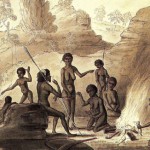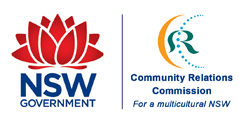How to get there La Perouse is at the end of Anzac Parade, 14 km south of Sydney’s CBD. It is serviced by Sydney Buses route 394 which depart Circular Quay and route 393 from Railway Square. For details phone … Continue reading
Adapted by Stephen Thompson, NSW Migration Heritage Centre, from Thompson. S, Lapérouse Museum & Visitor Centre, NPWS, 2002. Edited by John Petersen NSW Migration Heritage Centre, Kathleen Schilling DECC, Chris Ingrey DECC, Elizabeth Broomhead DECC. Website design by Annette Loudon … Continue reading
Bookmark on DeliciousRecommend on FacebookShare with StumblersTweet about it
During the 1920s people swarmed to La Perouse to enjoy the Snake shows, La Loop café, Aboriginal artists and Frenchmans Beach before taking the twilight tram back to Sydney. Many post-World War 2 migrants liked the place as it reminded … Continue reading
In the late 1920s the world economy slumped into the Great Depression. In some areas of Sydney unemployment was 40 per cent. Many families had no incomes at all and could not pay their rent. Unemployment camps sprang up at … Continue reading
Throughout the 19th century changes to the Botany Bay landscape related mainly to the construction of memorials such as Lapérouse Monument and Father Reçeveur’s Grave, forts such as Bare Island and the Macquarie Watchtower, and buildings such as the Cable … Continue reading
The arrival of Captain James Cook’s HMS Endeavour in 1770, the British First Fleet and the Lapérouse Expedition in 1788 would have sent shock waves through the Botany Bay clans. Like Cook before him, Captain Arthur Phillip sought to have … Continue reading
Botany Bay is one of the most significant places in the history of migration to Australia. It is the location where James Cook and the crew of the HMS Endeavour made first contact with the indigenous people on the east … Continue reading
Meet Momchilo Sedlan and see his traditional Serbian shoes.
Continue reading
Meet Manuela Provenzano and see the plate warmer she mistakenly bought to cook food with at Cabramatta migrant hostel in 1972. Continue reading
Meet Vera Faludi and see the Bulgarian paintings she brought with her from Chile in 1971. Continue reading
Meet Sigmund Ebert and see the crystal decanter his mother bought in Germany in 1948. Continue reading
Meet Eugenie Constantine and see her bronze plate from Egypt. Continue reading
The Italian presence in NSW predates the postwar migration boom. By 1881, there were 521 Italians in NSW with a sizable Italian community in Sydney comprising professionals, artists and importers. In 1881, 217 Veneto migrants arrived in Sydney. They had … Continue reading
During World War I, Italy supported the Allies, and several Italians living in Australia, who remained Italian citizens, were recalled back to Italy and conscripted. Many of those who returned died of the 1919 Spanish Influenza Epidemic and are buried … Continue reading
As most Italian migrants came from rural towns, many engaged in agricultural activities in Australia. In the 1950s and 1960s, Italians worked as market gardeners on the outskirts of Sydney in areas such as Ryde, Marsfield, Eastwood, Sutherland, Fairfield, Liverpool … Continue reading
With little English language knowledge and familiarity with their new country, Italians naturally sought security by congregating with other Italians. From the earliest periods of Italian migration to NSW, Italians created associations and clubs. Sydney’s Eolians formed the first regional … Continue reading
The family and its associated rituals were and still are today, the basis of Italian life. While Italian migrants worked extremely long hours, Sunday was reserved as a day to spend with the family. Most family rituals surrounded a ‘festa’ … Continue reading
Sydney’s Comitato Assistenza Italiani (Italian Association of Assistance) was established by an initiative of the Italian Government in 1968. The purpose of Co.As.It was to “coordinate, promote and develop the various activities of assistance for the Italian immigrants in NSW.” … Continue reading
The Church was the focal point of each Italian town and the priest was involved in the full parochial life of his parishioners. In Australia, the Church became aware of the need for Italian speaking clergy and sourced priests from … Continue reading
Meet Sheila Helprin and see the telegram sent by her grandparents when she left for Australia.
Continue reading
Meet Olga Burger and see the camphor boxes she bought in 1949 whilst departing China for the Philippines. Continue reading
Presented in partnership with the Powerhouse Museum, Co.As.It and the NSW Migration Heritage Centre, this exhibition presents a selection of 24 historical photographs documenting Italian migration and Italian life in NSW from the late nineteenth century to the present. TRIBUTE … Continue reading
Meet Barbara Varela and see the bedspread she made in Greece with her mother for her glory box. Continue reading
Meet Billi Turney and see the glass powder bowl she received from her brother for her 21st birthday during World War Two in England. Continue reading
Meet Maririta Torsello and see her mother’s snake made from WW2 hand grenades. Continue reading
Meet Chafic Ataya and see the binoculars he had on board the SS Misr 60 years ago. Continue reading
Meet Silvana Toia and see her childhood embroidery loom from Italy, brought to Australia by her mother.
Continue reading
Meet Brunhilde Srejic and see the tools from Germany she hoped to use as a hairdresser in Australia.
Continue reading
Meet Helen Sowada and see the koala bear her husband gave her as a leaving gift as he left to work in the Snowy Mountains in 1957. Continue reading




















!["I left Lebanon at the age of 16. I love adventure and exploration and took these binoculars with me. They are very special-from [my] grandfather to father, then my uncle [who] took possession because we were very little. By bringing them with me, I could explore the 'New World'!"](../../../cms/wp-content/uploads/2008/10/binoculars-150x150.jpg)




